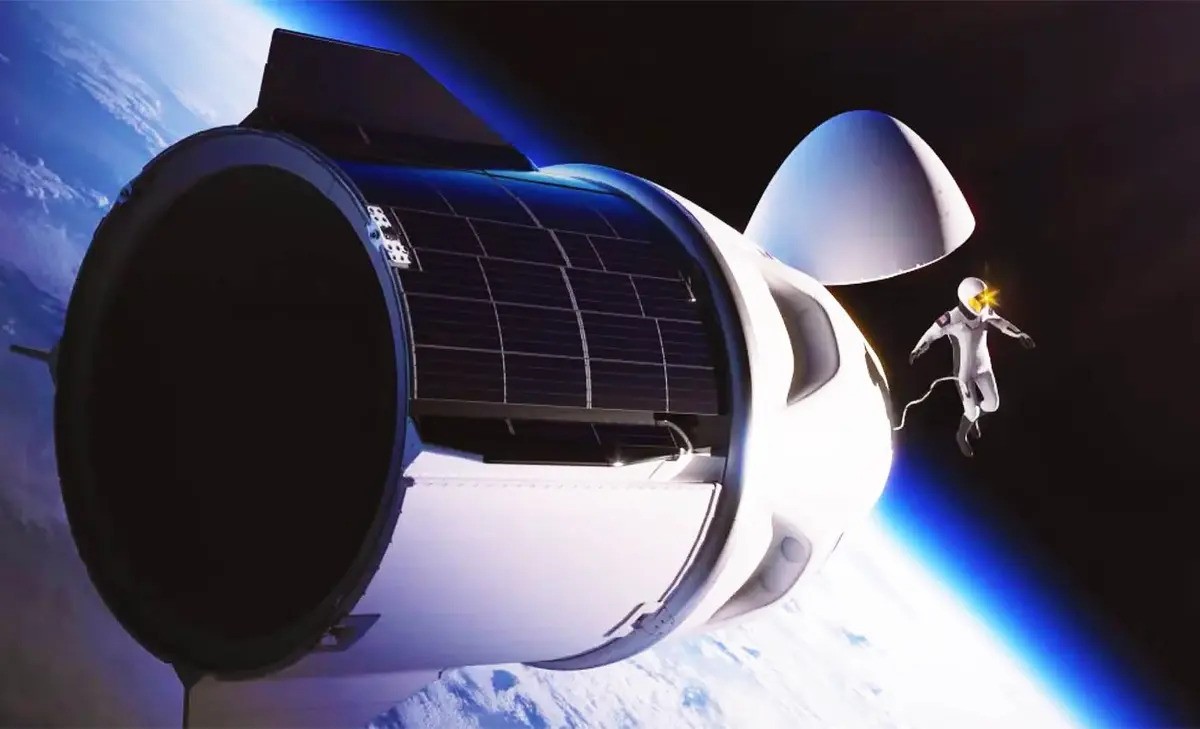In a groundbreaking mission, four civilians aboard SpaceX’s Polaris Dawn have made history as the first non-government astronauts to conduct a spacewalk. Unlocking the hatch of their Crew Dragon capsule, they stepped out into the vacuum of space in a daring and unprecedented extravehicular activity (EVA). The historic event took place at 6:12 a.m. ET, broadcast live by SpaceX.
Pushing the Boundaries of Space Travel
The mission, which has already seen the crew travel further into space than any human since NASA’s Apollo program, adds a new chapter to the era of commercial space exploration. On this five-day journey through Earth’s orbit, the Polaris Dawn team exposed their entire spacecraft to the vacuum of space—a bold milestone that showcases the crew’s unwavering commitment to pushing the boundaries of what’s possible in space travel.

As Shift4 Payments CEO Jared Isaacman, former U.S. Air Force pilot Scott “Kidd” Poteet, and SpaceX engineers Anna Menon and Sarah Gillis prepared for the spacewalk, they underwent a meticulous “pre-breathe” process. This crucial step purged nitrogen from their blood to prevent a potentially deadly condition as they faced the extreme environment of space.
A Spectacular View From Space
Isaacman was the first to exit the capsule, making his way up SpaceX’s so-called “skywalker”—a mobility aid resembling a ladder—and into the vast expanse of space. Describing the view, Isaacman remarked, “Back at home we all have a lot of work to do, but from here — looks like a perfect world.”
Joining him outside the capsule was Sarah Gillis, who followed shortly after Isaacman returned. She spent approximately 10 minutes outside testing her spacesuit’s mobility. SpaceX aims to develop more flexible spacesuits, replacing the restrictive suits of the past with something more akin to everyday wear.
From their unique vantage point, the entire Polaris Dawn crew enjoyed stunning views of Earth as it sped past below, witnessing sunrises and sunsets every 106 minutes.
“It is honestly one of my favorite views,” Mennon said.
“The sun peaks over the horizon and the whole world just lights up — or the whole world goes to sleep. And you just get to witness this hour after hour, and it’s so beautiful. Our Earth is so beautiful.”
A Giant Leap for Commercial Spaceflight
NASA Administrator Bill Nelson took to X, formerly Twitter, to congratulate the crew.
“Congratulations @PolarisProgram and @SpaceX on the first commercial spacewalk in history!” Nelson wrote. “Today’s success represents a giant leap forward for the commercial space industry and @NASA’s long-term goal to build a vibrant U.S. space economy.”

The crew achieved this spacewalk while traveling between 190 and 700 kilometers (118 to 435 miles) above Earth. The Crew Dragon vehicle spent approximately two hours exposed to space with its hatch open—a dangerous yet crucial part of the mission. Isaacman explained,
“There’s a lot of time built in for venting (or depressurizing the spacecraft) and repressurizing,” Isaacman told CNN about the two-hour spacewalk window.
Revolutionary Spacesuits Developed for the Mission
The focus of Isaacman and Gillis’ time outside the capsule was on testing SpaceX’s brand-new EVA suits. While they may look similar to traditional spacesuits, they do not feature a Primary Life Support System (PLSS), the bulky backpack used by astronauts on the International Space Station. Instead, the Polaris Dawn crew relies on long hoses for their life support—a significant departure from the designs used in government space missions.
Former NASA astronaut and SpaceX consultant Garrett Reisman has praised the engineering behind these EVA suits, which were designed and developed in just two and a half years. SpaceX envisions producing these suits on a large scale, rather than the expensive, custom-made models currently used in space exploration. Speaking about the suits, Isaacman shared his vision for the future: “We need space suits. And, you know, they shouldn’t cost hundreds of millions of dollars. We need tens of thousands of them someday.”
Mission Continues With Exciting Research
After their spacewalk, the Polaris Dawn crew re-entered the capsule, removed their spacesuits, and enjoyed a well-earned break. They shared images of their experience on X using SpaceX’s Starlink internet-beaming satellites, including a selfie from space and a breathtaking shot of Earth. “Hello Earth — We are so grateful for all the support! Please enjoy two recent photos from our mission and stay tuned for our next message Sent to you from space over a beam of Starlink laser light – Crew of Polaris Dawnt,” the crew wrote.
The team still has a few days left in orbit, during which they will conduct nearly 40 experiments, including research into the effects of microgravity on the human body. A key focus is space adaptation syndrome, a condition that affects about 50% of people who travel to space. Gillis is also excited about another experiment involving contact lenses equipped with pressure sensors to measure how microgravity impacts the crew’s vision. “We call it kind of endearingly ‘the cyborg experiment,’” Gillis said.
The Polaris Dawn crew is expected to return to Earth this weekend, concluding a mission that is not only historic but also a major step forward in the future of commercial space exploration.



